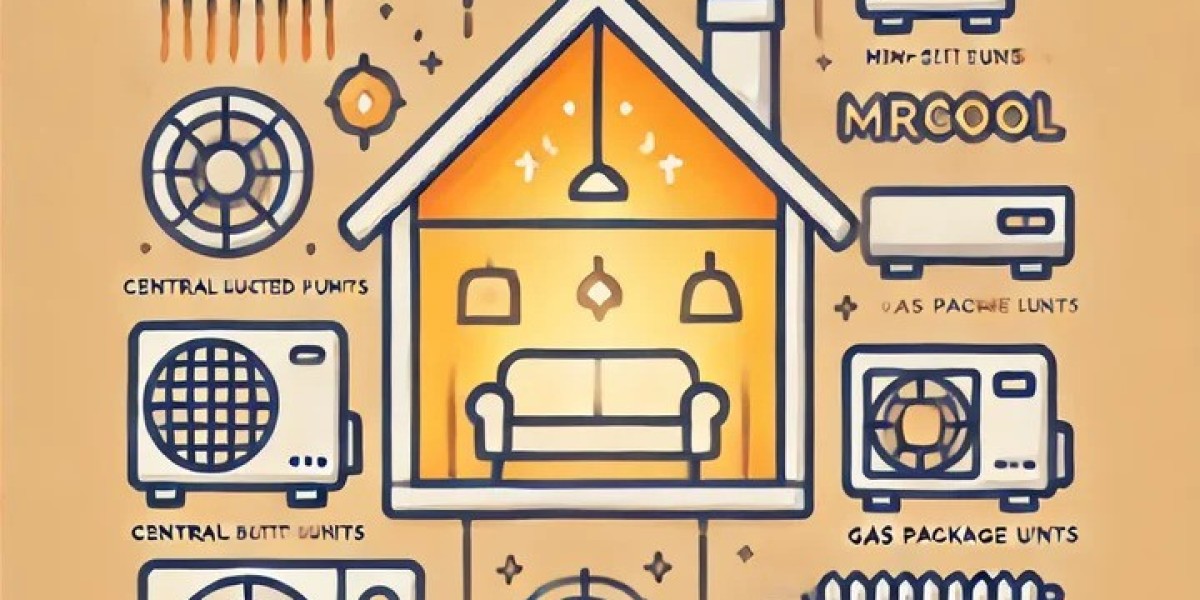MRCOOL Source mini-split systems have gained popularity for their energy efficiency and flexibility in residential and commercial HVAC solutions. These systems provide heating and cooling without the need for ductwork, making them ideal for a variety of settings. However, as with any HVAC option, there are both advantages and disadvantages to consider. This article explores the pros and cons of MRCOOL Source mini-splits, providing a comprehensive overview for potential buyers.
Pros of MRCOOL Source Mini-Splits
1. Energy Efficiency
One of the most significant advantages of MRCOOL mini-split systems is their energy efficiency. These systems often have high SEER (Seasonal Energy Efficiency Ratio) ratings, which indicates their ability to provide effective cooling with minimal energy consumption. This efficiency translates into lower energy bills, making mini-splits a cost-effective choice over time.
2. Flexible Installation
Mini-split systems do not require ductwork, allowing for flexible installation options. Homeowners can easily install indoor units in various locations, such as walls or ceilings, depending on their space's layout and design. This adaptability is particularly beneficial for older homes where adding ductwork may not be feasible or economical.
3. Zoning Capabilities
MRCOOL mini-splits allow for zoned heating and cooling, enabling users to control the temperature in individual rooms or areas. This feature enhances comfort by allowing occupants to set different temperatures based on their preferences or usage patterns. As a result, energy waste is minimized since unoccupied spaces can be set to lower temperatures.
4. Quiet Operation
Mini-split systems are known for their quiet operation. Unlike traditional HVAC systems that may use noisy blowers and compressors, MRCOOL mini-splits operate at lower sound levels, contributing to a more comfortable indoor environment. This makes them suitable for bedrooms, offices, and other quiet spaces.
5. Environmental Benefits
With a focus on energy efficiency, MRCOOL mini-splits also have a lower environmental impact. By consuming less energy, these systems help reduce greenhouse gas emissions associated with energy production. Additionally, many MRCOOL units use eco-friendly refrigerants, aligning with modern sustainability goals.
6. Remote Control and Smart Features
Many MRCOOL mini-split models come equipped with remote control capabilities and smart technology integration. Homeowners can easily adjust settings from anywhere, ensuring optimal comfort without needing to manually change the thermostat. Smart features may also allow users to monitor energy usage and receive alerts for maintenance needs.
Cons of MRCOOL Source Mini-Splits
1. Higher Initial Cost
While mini-splits can save money on energy bills over time, the initial investment can be higher than that of traditional HVAC systems. The cost of purchasing and installing mini-split units, particularly in multiple zones, can add up quickly. Homeowners should weigh this upfront cost against long-term savings when considering their options.
2. Aesthetic Considerations
The appearance of indoor units may not appeal to everyone. While MRCOOL mini-splits are designed to be sleek and unobtrusive, some homeowners may find the visible indoor units less aesthetically pleasing compared to concealed ductwork. This is a subjective consideration that can influence purchasing decisions.
3. Maintenance Requirements
Though mini-splits require less maintenance than traditional HVAC systems, they still need regular care to operate efficiently. Homeowners must clean or replace filters periodically and ensure that the outdoor unit is free from debris. Neglecting maintenance can lead to decreased performance and potential repairs down the line.
4. Limited Heating Capacity
In colder climates, the heating capacity of some mini-split systems may be limited compared to traditional heating solutions. While many MRCOOL units have features designed to enhance heating performance, such as variable-speed compressors, there may still be scenarios where supplemental heating is necessary.
5. Installation Complexity
Although installation can be straightforward for some homeowners, it still requires a level of technical expertise. Improper installation can lead to inefficiencies and operational issues. While DIY installation is an option for some MRCOOL systems, those without HVAC experience may prefer to hire a professional, which adds to the overall cost.
6. Limited Brand Awareness
While MRCOOL Source has established itself in the HVAC market, it may not be as widely recognized as some larger, more established brands. This could lead to hesitation among consumers who prioritize brand reputation and service availability. However, MRCOOL is known for its customer service and support, which can help mitigate these concerns.
Conclusion
MRCOOL Source mini-splits present a compelling option for homeowners seeking energy-efficient and flexible heating and cooling solutions. Their advantages, such as energy efficiency, zoning capabilities, and quiet operation, make them appealing for various residential and commercial applications. However, potential buyers should also consider the higher initial costs, aesthetic factors, and maintenance requirements before making a decision.
Ultimately, understanding the pros and cons of MRCOOL mini-splits will help consumers make informed choices that align with their heating and cooling needs. For more detailed information on MRCOOL Source mini-splits, visit MRCOOL Source.



